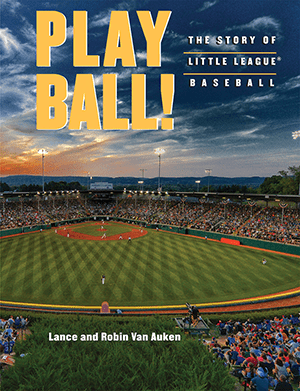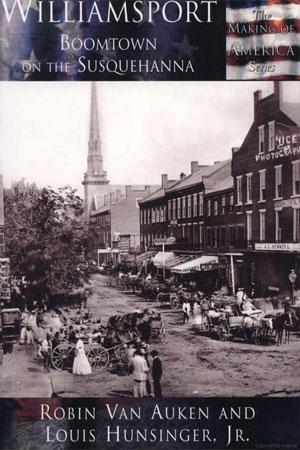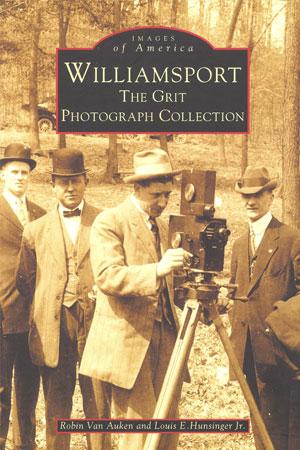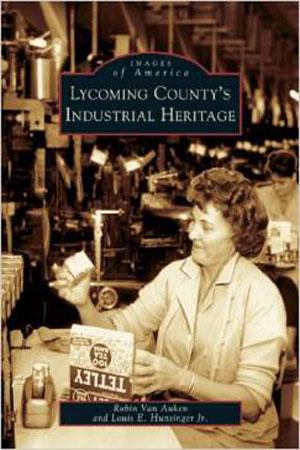Play Ball! the Story of Little League Baseball
Play Ball! The Story of Little League® Baseball is the remarkable story of Little League® Baseball, from the first diamond in Williamsport, Pennsylvania, to the playing fields of the world. The book charts Little League’s history from the earliest days and shows how, in many respects, its history parallels America’s history: isolation in the beginning; rapid expansion; a civil war of sorts, followed by reconstruction; struggles over civil rights and gender equity; and foreign entanglements. A microcosm of American society, Little League® reflects and is affected by cultural, political, and historical trends. Second Edition: Updated through 2018.
by Lance Van Auken and Robin Van Auken
The Little League® Baseball World Series
Little League® Baseball World Series is a microcosm of American history, filled with countless anecdotes, good fortune, adversity, and hope. In 1947, when the first Little League® Baseball World Series was played, there were seventeen leagues in two states. Since then, Little League® has achieved global recognition and has touched the lives of children and families in more than one hundred countries. The World Series is the culmination of dedication and teamwork in more than sixteen thousand games ending in a sixteen-team tournament in Williamsport, Pennsylvania. The Little League® Baseball World Series remembers the history of the tournament and its role in bringing together communities. The Little League® Baseball World Series celebrates this rich baseball history and the best teams the league has produced through the years.
by Robin Van Auken
Williamsport: Boomtown on the Susquehanna
Williamsport: Boomtown on the Susquehanna views the history of Williamsport, as well as many towns and boroughs of Lycoming County. The book ranges through the fertile valley that grew from a struggling frontier village into a town with a taste for success, eventually molding itself into a magnetic and vibrant city. Thousands were employed as lumberjacks, and others worked in sawmills, planing mills, or furniture factories that processed the lumber. Until 1894, lumber was the county’s main industry. Inevitably, the mountainsides were denuded, and floods toppled the remaining lumbering companies. “Williamsport: Boomtown on the Susquehanna” is a 160-page paperback filled with more than 100 historical and nostalgic photographs of people and places in the region.
by Robin Van Auken and Louis E. Hunsinger Jr.
Williamsport: The Grit Photograph Collection
Williamsport: Grit Photograph Collection is a look through 100 years of Grit newspaper history. A Sunday morning staple as America’s favorite family newspaper, Grit was made possible by a Dietrick Lamade, a German immigrant and self-made man who settled in Williamsport, Pennsylvania. The first year of Grit was one of adversity and uncertainty, but Lamade came up with innovative ideas, such as direct mail and newsboys throughout the nation that transformed it into a national institution. Now a bi-monthly, full-color glossy magazine that targets Rural American audiences, Grit remains a national treasure.
by Robin Van Auken and Louis E. Hunsinger Jr.
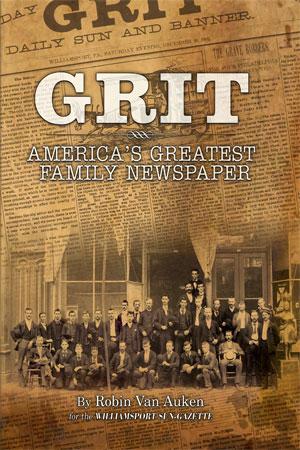
Sunday Grit
For decades, tens of millions of people in small-town America depended on Sunday Grit to tell them the news of the world, long before television became widely available. Sunday Grit correspondents were on hand to record momentous events from a turn-of-the-century city on the rise, through the end of the lumber boom, World War, Depression, to modern times. From 1882 through 1996, Sunday Grit was on hand to record America’s — and the world’s — history. And, with millions of readers throughout the United States, it also had the power to influence politics, local and national. Many people miss Sunday Grit, which brought homespun news to their doorsteps each week, along with favorite comic strips, advice columns, recipes, patterns, news of celebrities, as well as human-interest features and thunderous editorials.
by Robin Van Auken
Lycoming County’s Industrial Heritage
Lycoming County’s Industrial Heritage reviews Northcentral Pennsylvania’s rich industrial history, first in lumber and then in manufacturing. After the Lumber Boom, many company towns collapsed. Boards of trade were created to entice manufacturers to the region. During the first half of the twentieth century, Lycoming once again prospered with hundreds of new entrepreneurs and companies. It documents the people who worked in the factories, mills, and for the manufacturers that no longer exist, victims of recession, urban sprawl, and offshore industries. Each image honors the role of labor and serves as a reminder of the individuals who helped build industrial America.
by Robin Van Auken and Louis E. Hunsinger Jr.
Muncy Postcard History Series
Muncy Postcard History Series examines the small river town of Muncy, Pennsylvania. Founded shortly after the French and Indian War, Muncy was the earliest European settlement in the West Branch Valley of the Susquehanna River. By 1769, land speculator Samuel Wallis had acquired more than 7,000 acres, so he sold much of this land to pioneers in search of a better way of life. By 1832, the West Branch Canal made Muncy a business thoroughfare and lumber boomtown. Like most Pennsylvania river towns, Muncy suffered great loss in the flood of 1889, which also devastated Johnstown. Another massive flood in 1894 sounded the death knell for the canal system. The railroad, which superseded the canal system throughout the United States, kept the local industry alive, although the port businesses disappeared. Through vintage postcards, Muncy depicts the varied past of this quiet, well-preserved town.
by Robin Van Auken
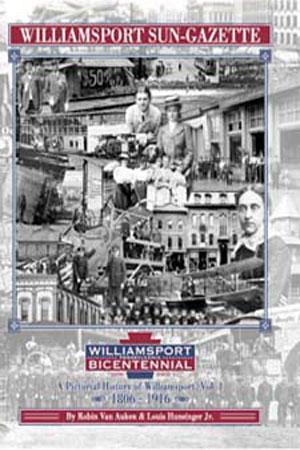
Williamsport Sun-Gazette: A Pictorial History, Vol. 1
This book celebrates the City of Williamsport’s Bicentennial. To honor this event, the Williamsport Sun-Gazette produced a three-volume, pictorial history. Most of the images within this series have never been published in book form. Primary resources for the series are the historic Grit, Williamsport Sun, Gazette and Bulletin and the Williamsport Sun-Gazette archives. This volume is the first of three that traces in narrative and picture form the transformation of Ross’ Town into the City of Williamsport. It explores the development in thirteen categories from 1806 to 1916. The text welcomes outsiders to this rich history even as the pictures evoke memories in those who have walked the streets and lived in this special place.
by Robin Van Auken and Louis E. Hunsinger Jr.
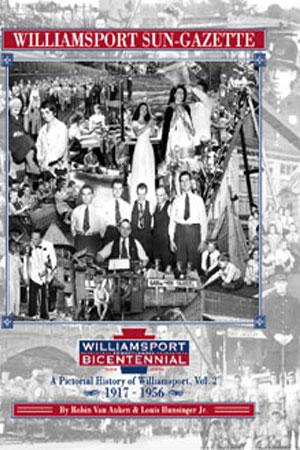
Williamsport Sun-Gazette: A Pictorial History, Vol. 2
This book celebrates the City of Williamsport’s Bicentennial. To honor this event, the Williamsport Sun-Gazette produced a three-volume, pictorial history. During the 38-year period covered in this second volume of the Williamsport Sun-Gazette’s Bicentennial Pictorial History 1917-1955, the community and its people lived through two world wars, the Great Depression and two major floods. The city survived and became a better place to live and work. More than a half-century has passed since the last photo in this volume was taken, probably by a press camera, the long-gone famous workhorse of photojournalism. So, it really is not likely a Remember When” for most readers. It is almost “news” or remembrance of stories told by their elders.
by Robin Van Auken and Louis E. Hunsinger Jr.

Williamsport Sun-Gazette: A Pictorial History, Vol. 3
This book celebrates the City of Williamsport’s Bicentennial. To honor this event, the Williamsport Sun-Gazette produced a three-volume, pictorial history. This is the final volume of the Williamsport Sun-Gazette’s Bicentennial Pictorial History 1956-2006. Most of its readers will have lived and worked through the years depicted in it, and, although it relates to the people of this era, it will tell a story for years to come. It is a difficult task to shuffle through thousands of photographs, searching not only for significant historic moments but also to find images that represent a community’s past. It’s also a joyous task, following a trail left by talented photographers and journalists documenting their hometown.
by Robin Van Auken and Louis E. Hunsinger Jr.


